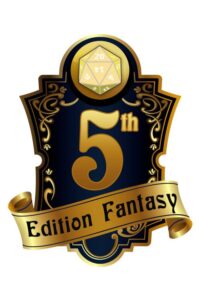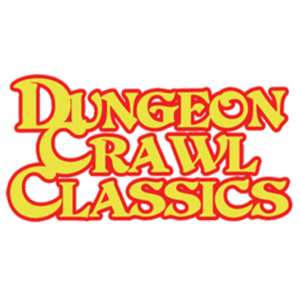
Welcome everyone – today we’re going to take a quick look at the D&D gaming landscape, and the various games within it. Perhaps we can find one that is for you?
Dungeons and Dragon 5e

This is the big boy on the block currently. Chances are good that if you watch a random Let’s Play or RPG stream, that it’s a D&D 5e game. It has, by far, the biggest catalog of lore for its various Campaign Settings – especially for the Forgotten Realms. The modern version of it tends to ignore a lot of the backlog of information that’s available for its settings, with each of them having been reimagined as they release (though admittedly only a few have been re-released, with Wizards of the Coast tending to prefer releasing new IPs instead) and boiled down to a core experience – which may or may not be new.
Rules wise, 5e is fairly simple in setup and easy to learn, making it a good choice for beginners to pick up. It does suffer from a few issues in that there’s a limit to the amount of customization that you can do with your character, due to the leveling system.
For creators, the main problem with 5e is that it’s incredibly restrictive in the use of its Open Gaming License unless you publish on the DMsGuild. For example, you can’t put goblin stats into your adventure because you’re not allowed to reference a LOT of entries from elsewhere. You also can’t use certain terms (like Dungeon Master) that are standard in the 5e rules set – and you can’t use many of the iconic monsters from it.
Pathfinder 2

An evolution of Pathfinder 1 (again a revolution from Dungeons & Dragons 3.0/3.5), Pathfinder 2 diverges significantly from its origins. Paizo has a history of embracing their campaign setting (Golarion) lore and evolving it. Everything tends to feel like a natural extension of what came before – for example, all of the adventures and adventure paths that were released for PF1 have become canon for PF2’s Golarion, as well as having passed a number of years in-game. They also have a history of being very inclusive in their game – their iconic characters run a full gamut of races, colors, classes, genders, ages, and mental capabilities, as well as having NPCs that embody the issues their players might face in real life.
Pathfinder is very, very modular – if you can think up the idea, chances are good that you can make it. It offers an absolutely insane level of customization for its players. This makes it difficult for new players to pick up though, as the initial time investment for understanding the game is very high. Most find that the time invested is worth it though, as it allows for some interesting choices. Also, the 3 action economy that PF2 runs on is quite simply amazing, as it’s super simple in theory and understanding, but allows for so much variety in gameplay.
For creators, Pathfinder 2 also lives within the OGL system and they are very generous with their uses. Basically, if it’s on something known as Exhibit B, you can use it. The only things you can’t tends to be things that are specific to their IP (like their Campaign Setting) and a few monsters are off limits, but they often join the available line-up within a year or two of appearing in an Adventure Path.
Dungeon Crawl Classics

Also known as DCC, it is a call-back to earlier versions of D&D, and has a very old school or Sword & Sorcery feel to it (potentially the biggest of the Old School Revival (OSR) games): for example, magic is very powerful but extremely dangerous to its practitioners. Races and classes are not eliminated, but they are put together. That means that a dwarf can be level 1 to 10, but he can’t be a wizard, as that’s a separate class/race. The system also has a couple of interesting twists to it beyond that: First is the character funnel – ALL your characters start at level 0. But you start with more than one level 0 character, usually 4 – along with your friends. That means that the first group of adventurers that you play in a 0-level game could have up to 20 characters, but you only play one of your 4 at any time. Whichever character of yours that survives that adventure: That’ll be your character going forward.
Secondly, is the idea of the dice chain. DCC uses more than just the standard polyhedral dice used in both 5e and PF1 – instead, it uses those dice, and adds a number of others, like d16, d24, and d30s. Basically, the better your character is at something, the bigger the dice they use.
DCC is relatively easy to get into – you don’t have that many options at low levels. But it’s a difficult system to master, as you have to think in a very different way when playing: You can and WILL die if you don’t run away at times – something that doesn’t happen very often in other fantasy RPGs. They’re designed as power-fantasies, but DCC is designed as a much grittier and more deadly experience.
Creator-wise it’s the most restrictive: You need permission from Goodman Games to release items for it. And they might not give it, though they are good at answering those requests in a timely manner. But it is very FUN and interesting to design for DCC, as it is a very different experience and uses parts of your creative design thinking that you might not otherwise use.
So, I hope you enjoyed this quick little rundown. Bear in mind that there are TONNES of 5e versions of games out there, and a whole host of OSR games as well, far too many for me to list and go through. But these are the main 3. Which is your favorite, and why?
Let us know below or on Facebook.

